A Comparison of the Ricoh 500g, Rollei XF 35 & Olympus Trip 35
The popularity and price of point and shoot 35mm film cameras from the late 80’s and 90’s have significantly increased over the past two years. Most of these more ‘modern’ point and shoot cameras are made from mainly plastic materials and the good ones have nice glass and delivers sharp photos. I can’t afford one of these trendy retro cameras and I also don’t care for their look and feel. I decided to look back to the birth of the point and shoot film camera and compare three beautiful inexpensive machines from the late 60’s and 70’s and see if they could deliver nice photos today.
Click on the image below to see other views.
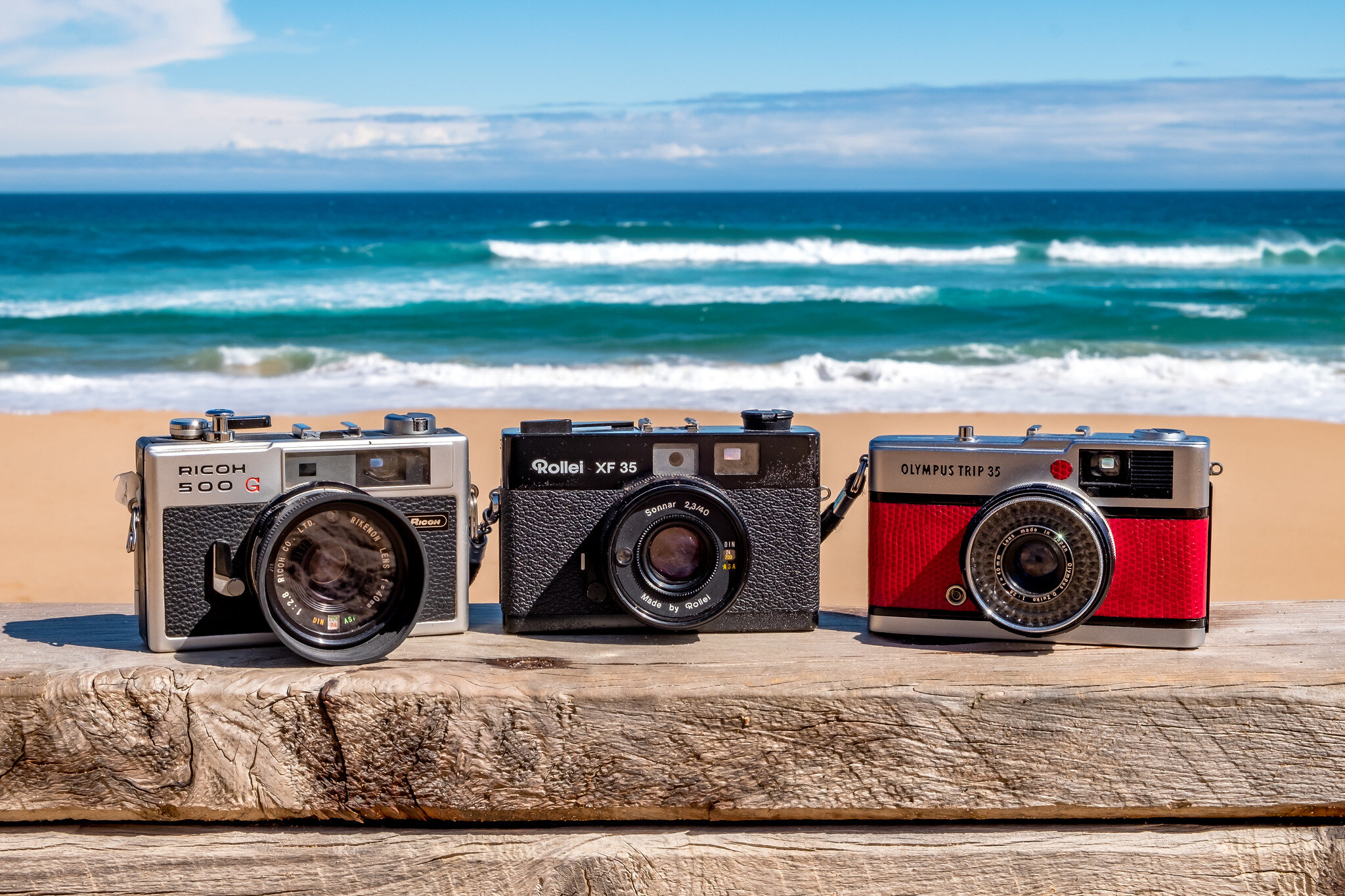
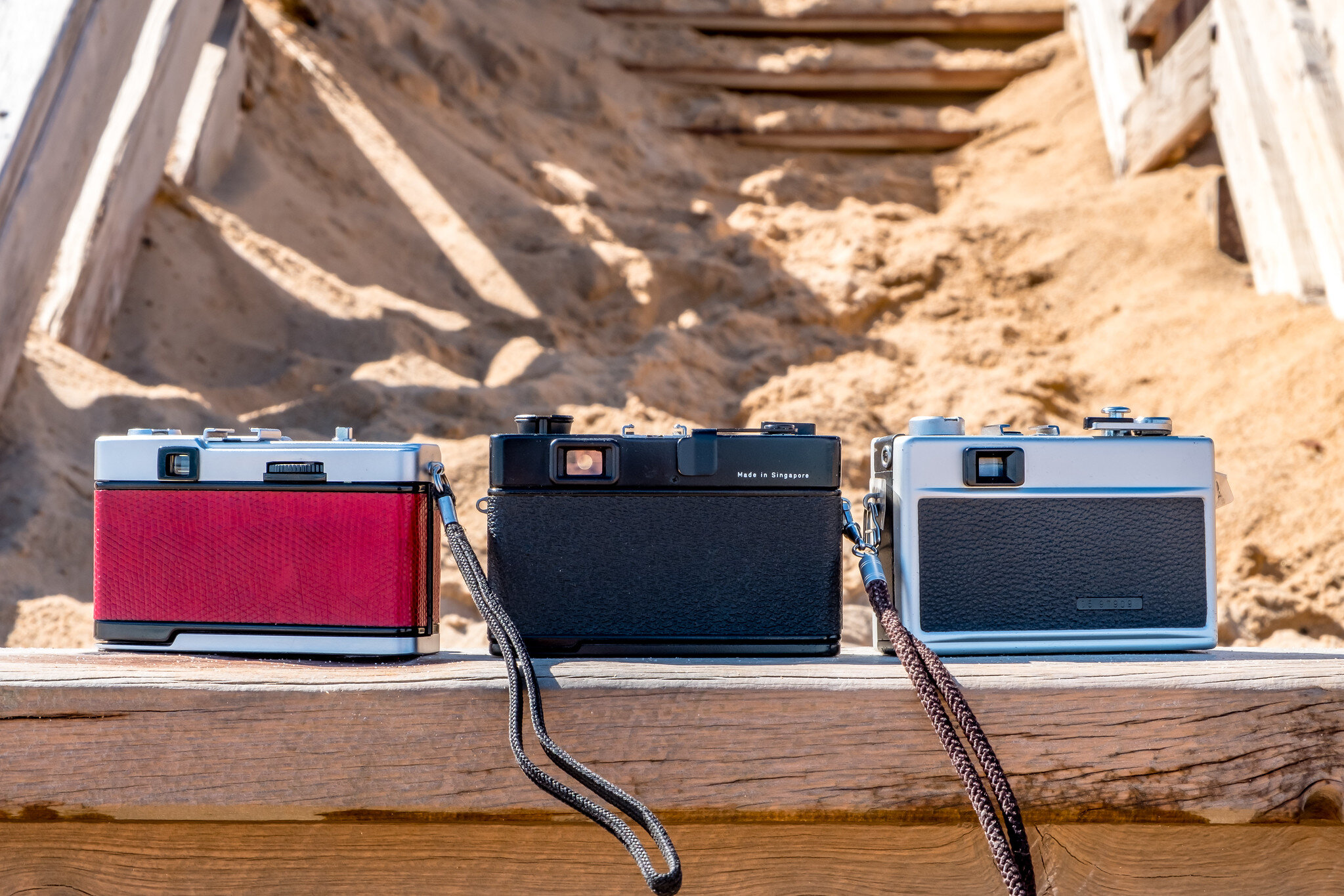
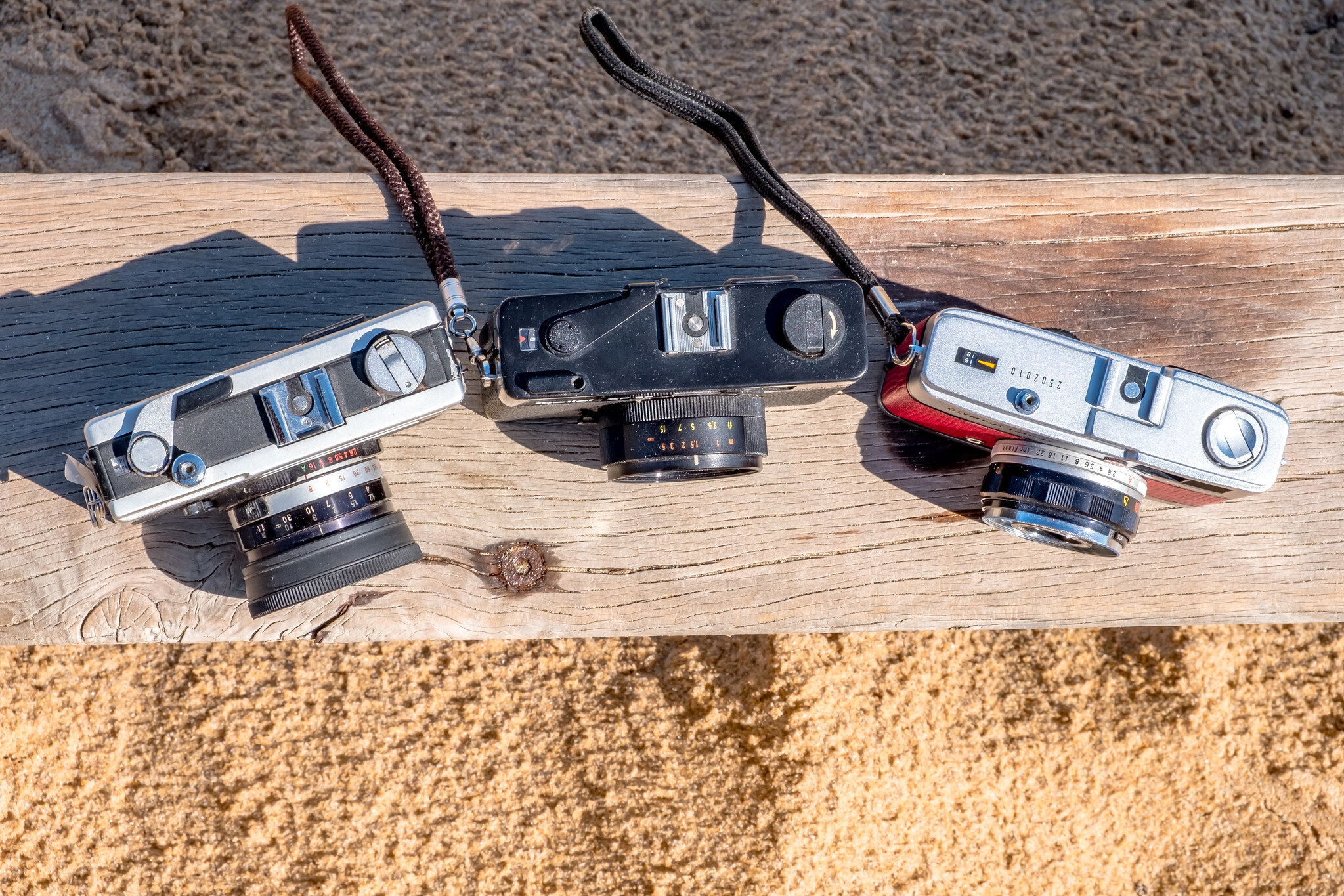
The Ricoh 500g
Date Introduced - 1972
ISO Range - 64-800
Lens - 40mm f/2.8
Exposure Modes - Shutter Priority and Manual
Price - I paid $80AU for this one on Gumtree - an Australian buy and sell site.
The Ricoh500g was introduced by Ricoh in 1972. It was also sold by Sears as the Sears 35RF. It can shoot in manual mode or shutter priority mode. The 500g caught my eye because of the retro-cool 1970’s chrome and black steel body in an ultra-small size. They are not rare and after some research, I found this one on Gumtree and paid $80AU for a camera that was advertised as fully functioning.
Inside the viewfinder is a bright needle that points to the correct aperture for the shutter speed. The markings are big and bold and easy to read. The aperture ring, shutter ring and focus is all packed onto the tiny lens barrel so quickly adjusting settings and focus can be a challenge especially if you have big fingers. The exposure meter works as long as you stick in common LR44 button batteries. The beauty here is that the camera can be used on manual mode without batteries (this is without the exposure meter).
It uses the standard yellow rangefinder patch in the centre of the viewfinder for focus. It’s pretty bright and easy to see making focusing easy even if you are not used to rangefinders. Most of the time I am shooting subjects that are 10+ meters away and leave the lens focused to infinity for quick shooting
The Zeiss Tessar based Rikkenon f/2.8 lens is surprisingly sharp and renders great contrast. When pointed towards the sun, there's also a nice diamond-shaped flare that is thrown across the image.
The film advance is a short throw and sounds like a wind-up children's toy. Equally the shutter has a unique kid’s toy ‘plink’ sound to it. It’s not as satisfying or definitive sounding as the clunk sound of a Pentax Spotmatic but fun nonetheless. It’s small size and quirky and quiet shutter make this camera a great stealth street shooter.
As more and more cameras become trendy icons and see their prices skyrocket, this little guy is the dark horse of the small rangefinder family.
Here are three frames from the Ricoh 500g, click on the image for the next in the gallery.
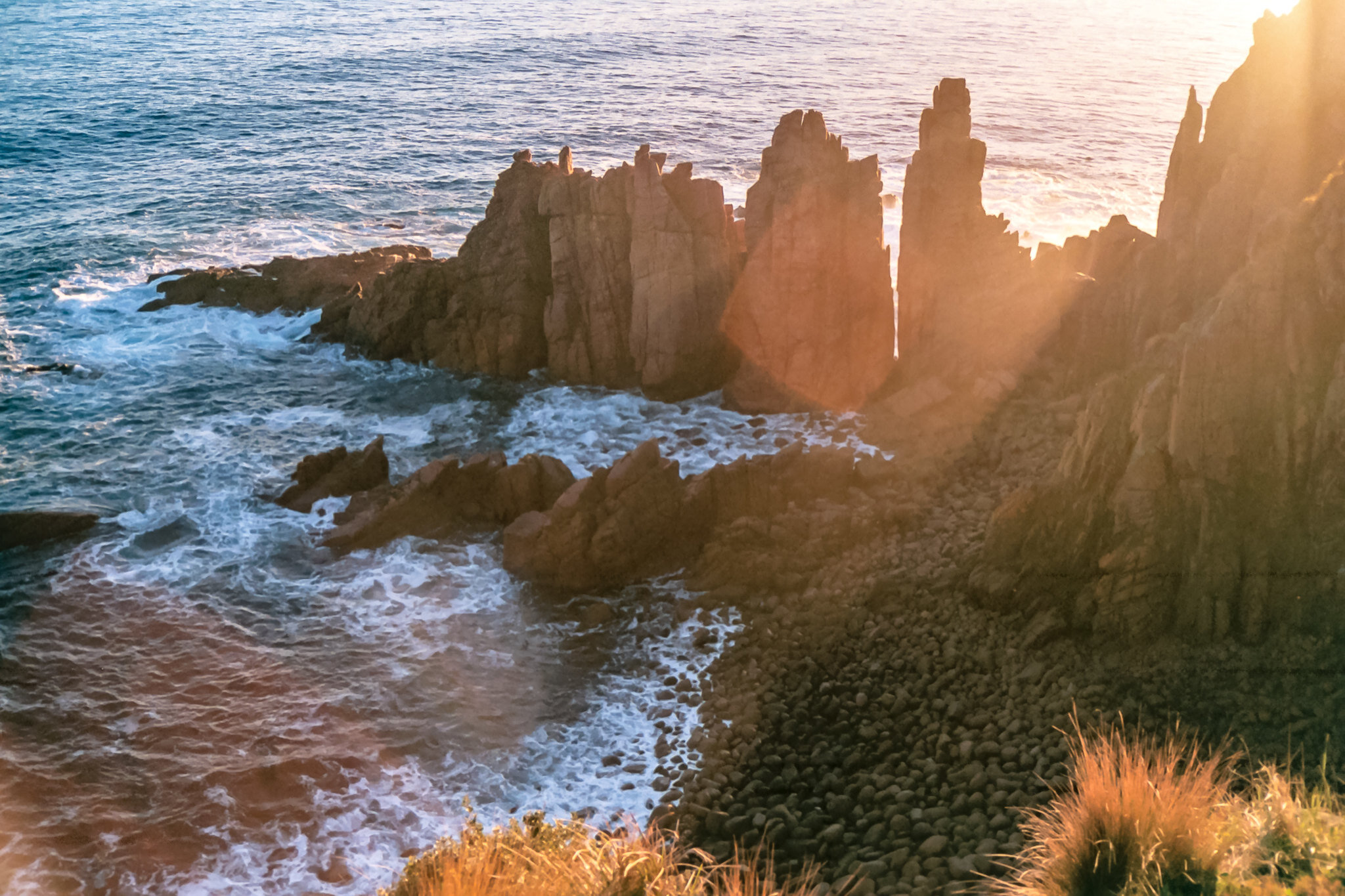
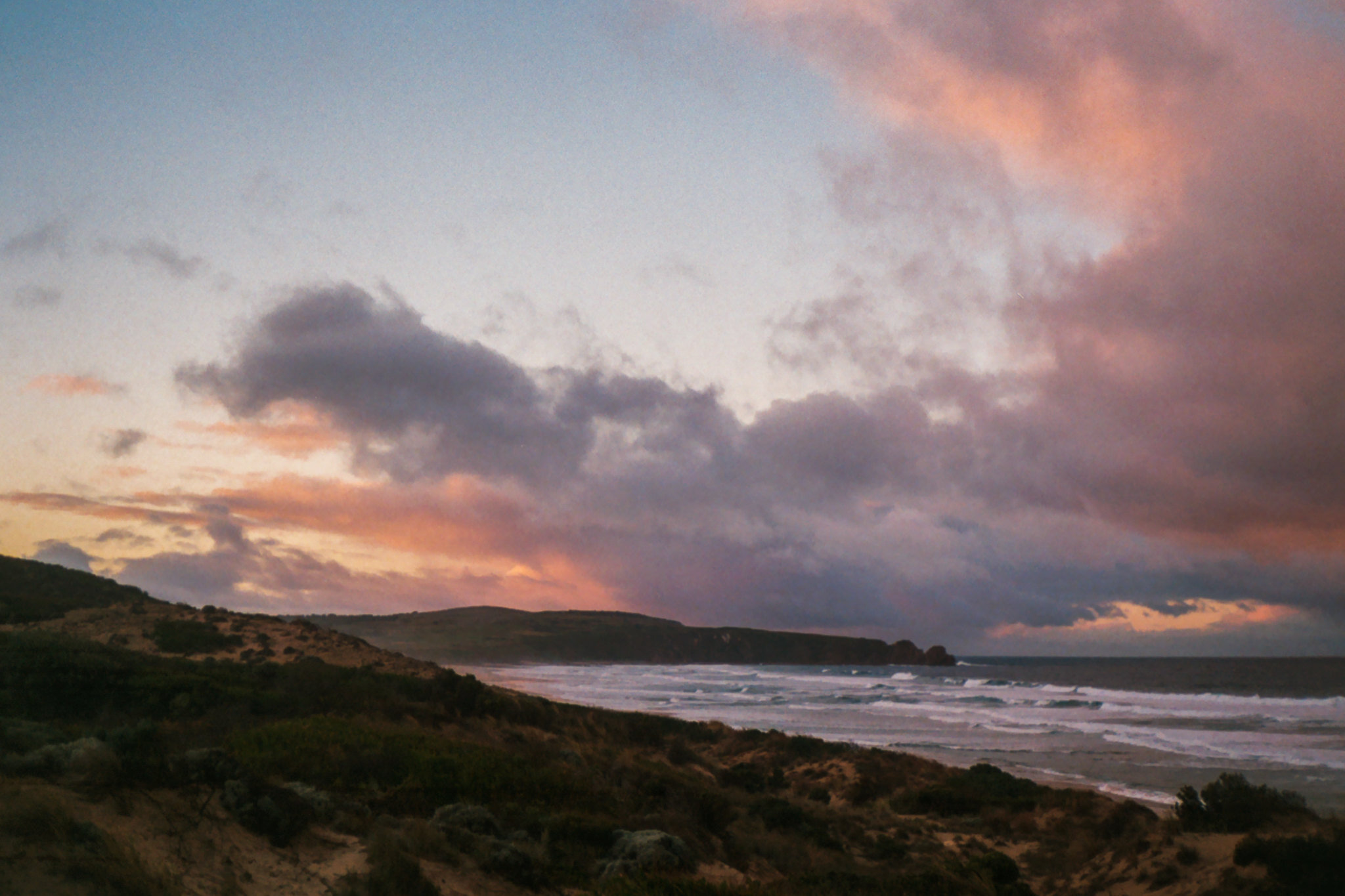
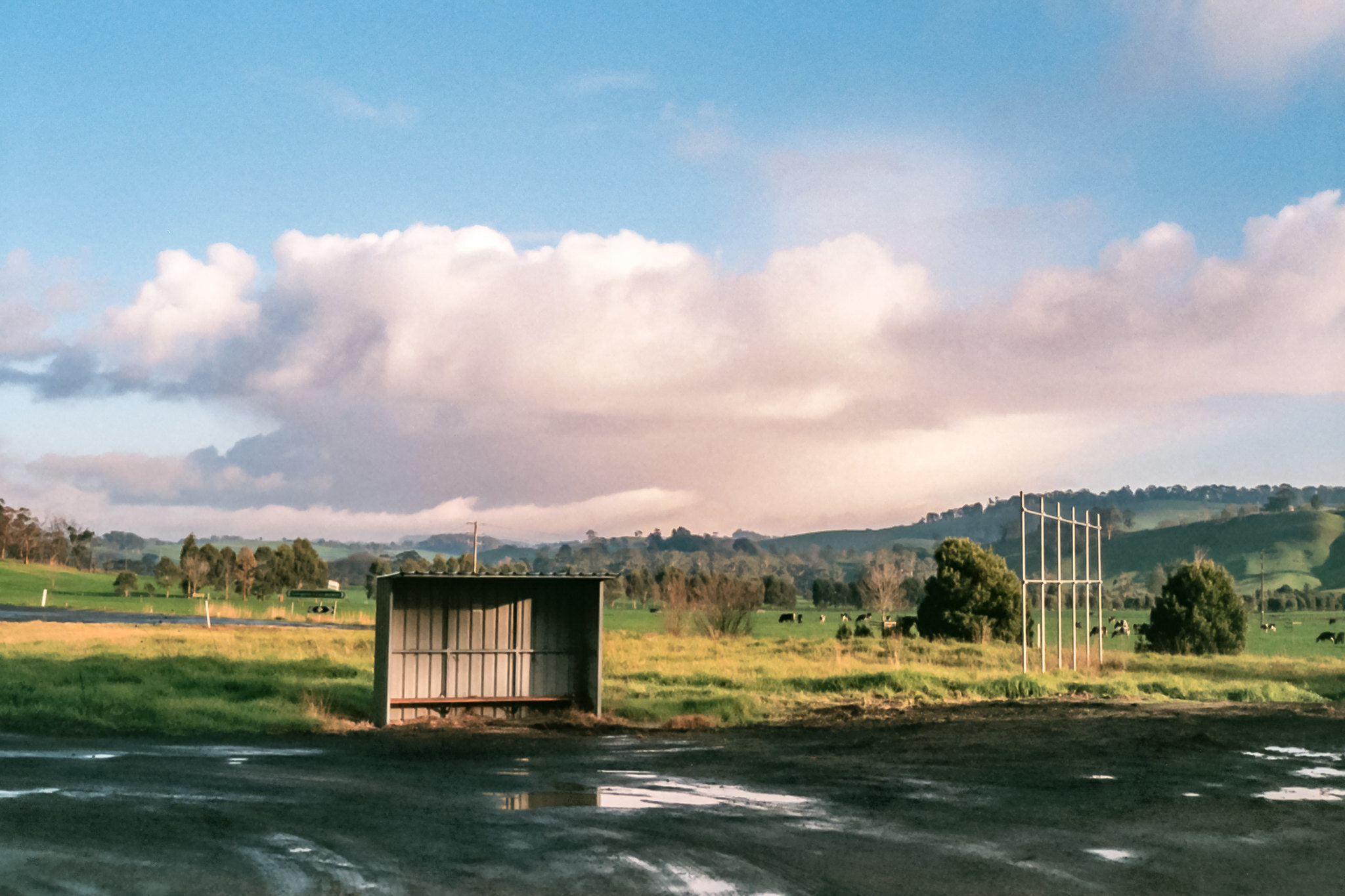
Rollei XF 35
Date Introduced - 1974
ISO Range - 25-400
Lens - 40mm f/2.3 (made in Germany)
Exposure Modes - Auto only
Price - I paid $35 (a steal!) for this one on Gumtree - an Australian buy and sell site.
This 1974 little compact rangefinder was manufactured by Rollei in Singapore of metal and plastic materials. Its f/2.3 Sonnar lens made by Carl Zeiss was its distinct selling point. Rollei also owned Voitlander at the time and the camera was also released as the Voitlander VF 135. The camera was only in production until 1980 so there are not that many of them still laying around today.
The Rollei XF 35 is a sexy little camera with ergonomics to suit a BMW. It’s the little brother to the fully manual Rollei 35s. The XF 35 is small and fully auto. There is no adjustment for aperture on the lens (or anywhere else) but that makes grabbing the focus ring feel quicker and easier than on the Ricoh. There’s no option to choose shutter speed or aperture in the little black box. It’s a true point and shoot camera.
The viewfinder is big and bright and although its all automatic, the viewfinder tells you the shutter speed and aperture used for the given shot. The Rollei has the typical rangefinder patch focus that is also bright and easy to use.
It has a satisfying metal film advance that sits flush with the camera making very nice ergonomic feel. The camera is basically the exact same size as the Ricoh 500g but has a much sleeker/refined look and feel.
Here are three photos from the Rollei XF 35, click on the image for the next in the gallery.
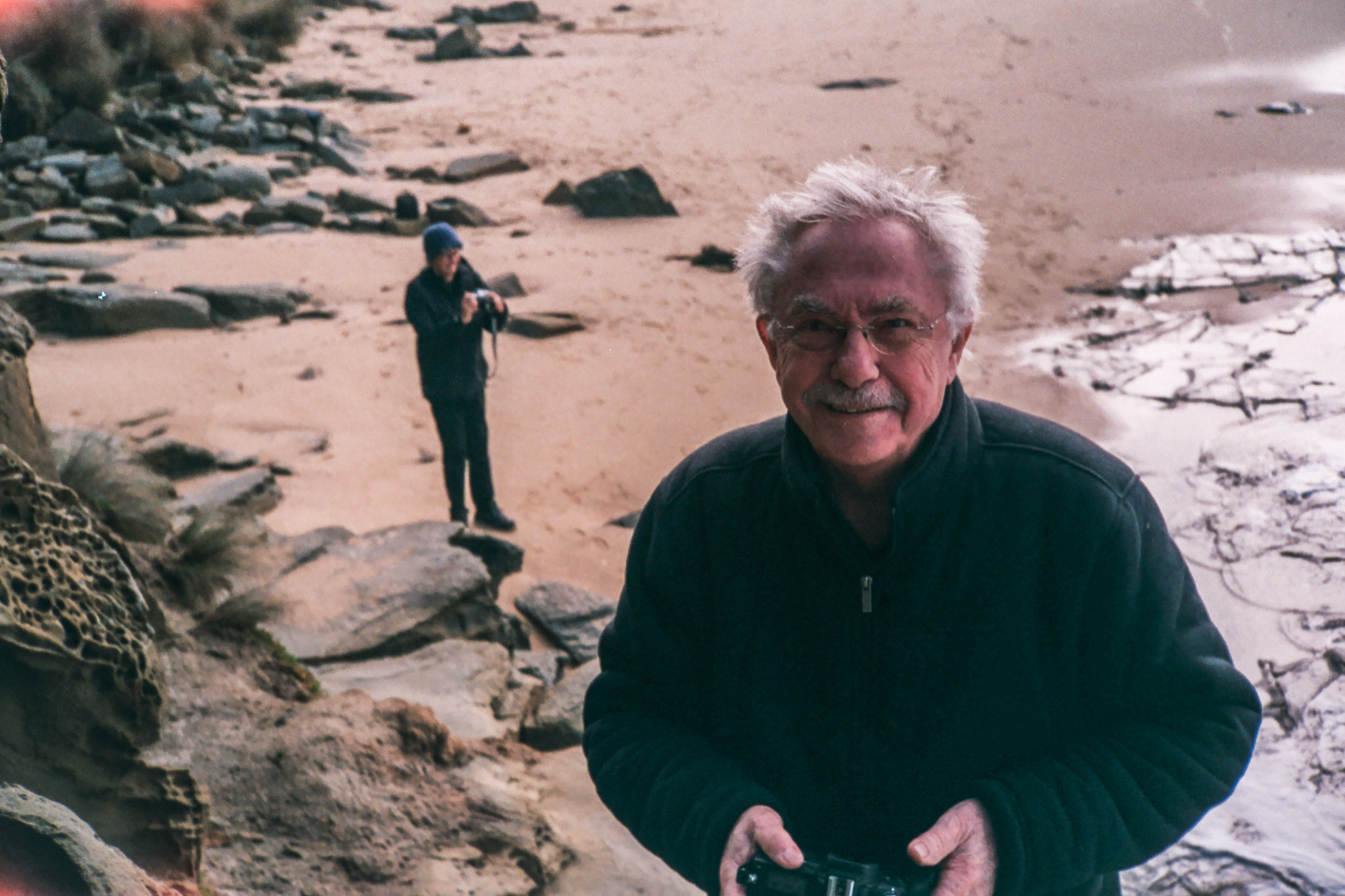


Olympus Trip 35
Date Introduced - 1967
ISO Range - 25-400
Lens - 40mm f/2.8
Exposure Modes - Auto only
Price - This camera was completely cleaned, lubricated and adjusted (CLA) add all new leatherette added by Mark Hill from South Australia. Mark charges around $265 for a completely refurbished Trip 35.
I would consider this as one of the original point and shoot cameras. Olympus introduced the Trip to consumers in 1967 and manufactured roughly 10,000,000 by the time they were discontinued in 1984. The Trip was originally designed to be a point and shoot camera that was easy and convenient to use on vacation and it took good photos.
The Trip 35 was one of the first cameras to have a quality lens and take good photos but did not require any photography knowledge. The camera chooses the aperture and then uses either 1/40th or 1/200th shutter speed depending on conditions.
The viewfinder is brighter than either the Ricoh 500g or Rollei XF35. I’m not sure if this is because my Trip 35 has been professionally clean and adjusted restoring it to mint condition or if the viewfinder is just better than the other two.
Focus is achieved via a zone focus system. There are 4 icons on the focus barrel equating to 4 focus zones to choose from - portrait (1m), 2 people (1.5m), a group (3m) or landscapes (infinity focus). As long as you remember to change the zone depending on the shot, focus is dead simple.
The Trip 35 does not require batteries. It has a selenium cell around the lens that powers the exposure meter. As long as the selenium cell is still active, everything works as it should.
Here are three photos from the Olympus Trip 35, click on the image for the next in the gallery.
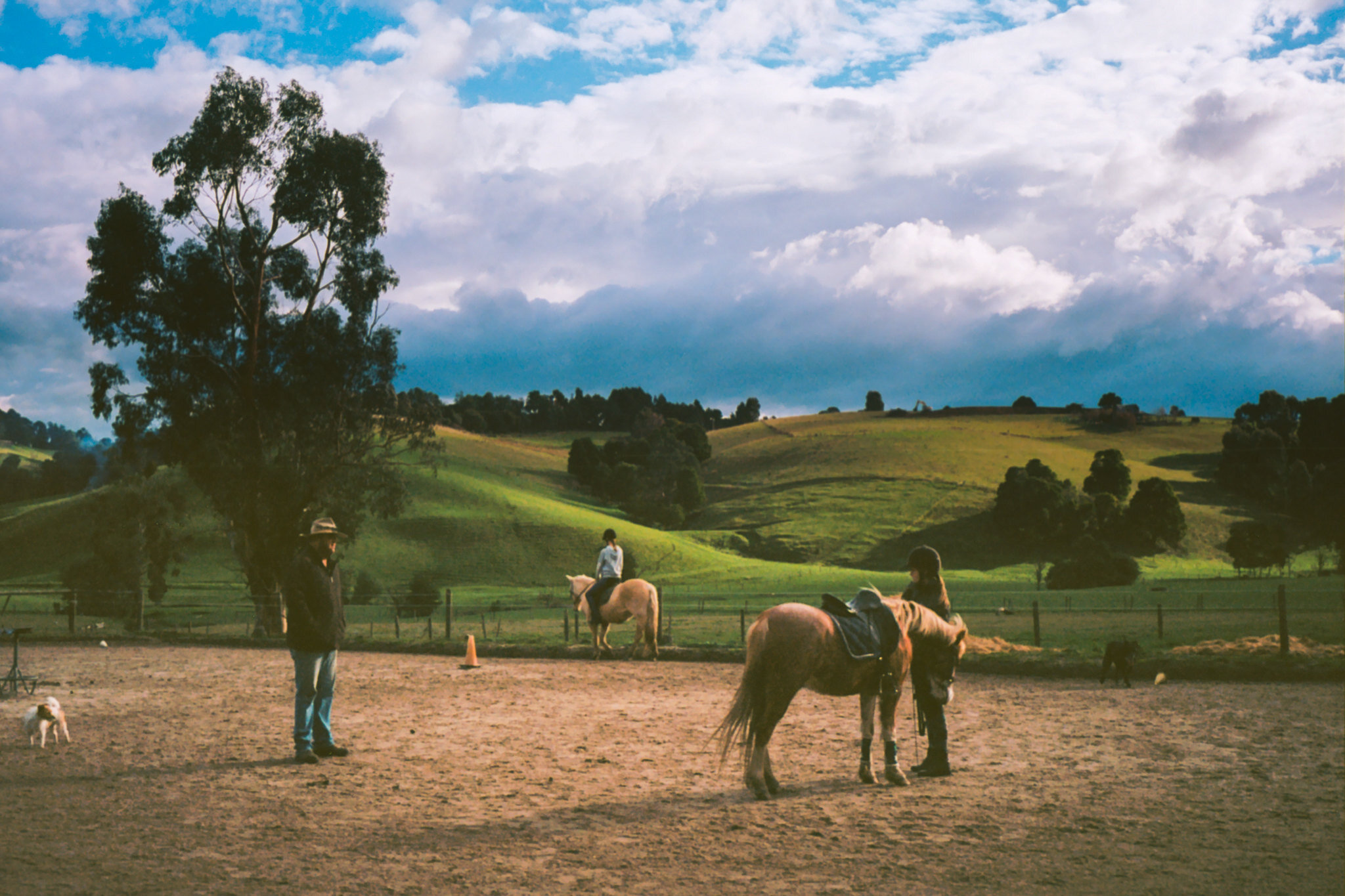

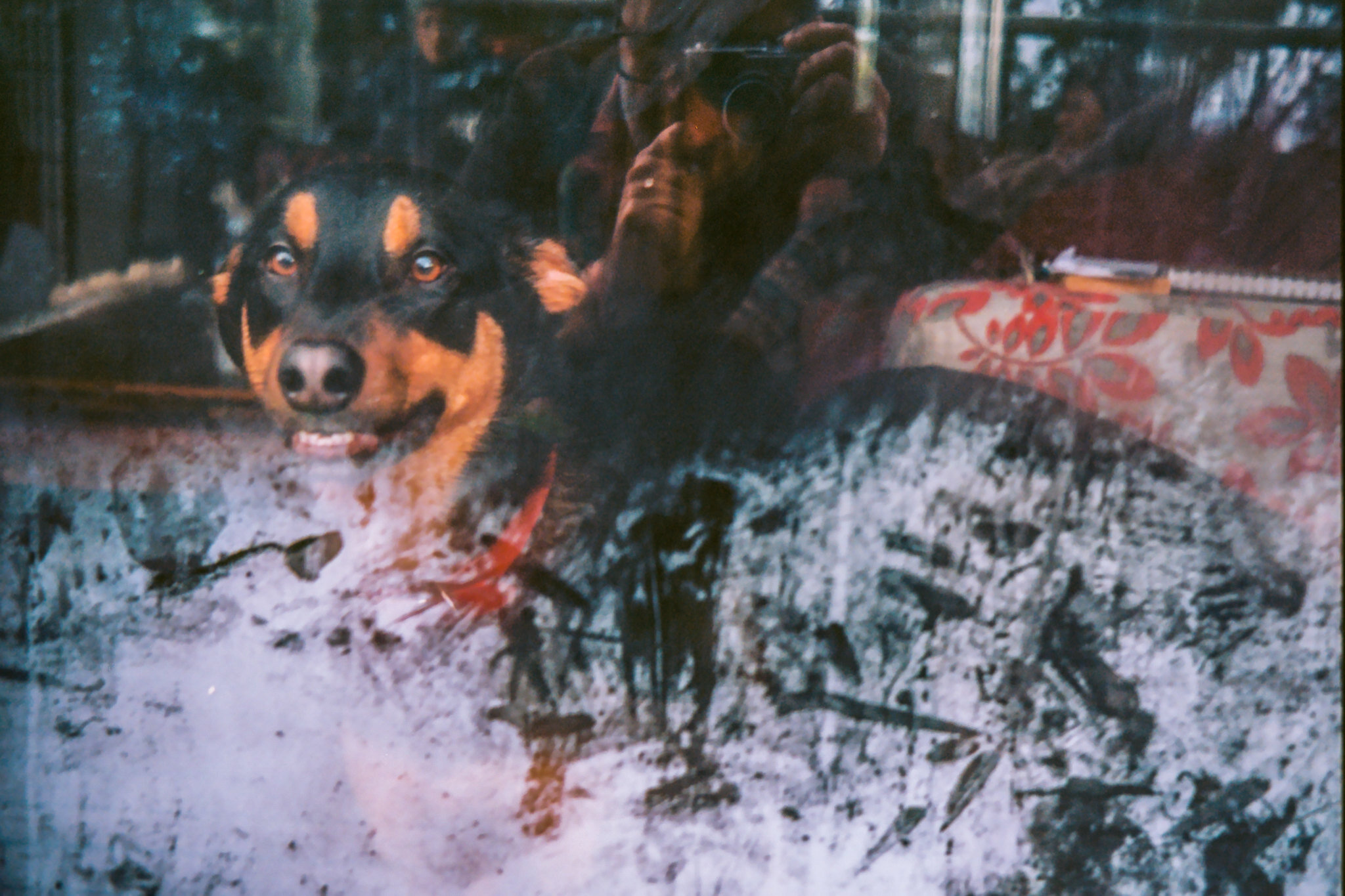
Conclusion
I love each of these three little cameras. They are all perfect for throwing in the camera bag alongside other gear or to carry in the jacket pocket. They are perfect for taking photos of those times when you would normally not have a camera and they take these photos very well.
The Ricoh 500g is the only one of the three that allows manual adjustment of aperture and shutter speed so if you must have a manual camera, this is the only one of the three that will float your boat. But for me I was looking for a true point and shoot camera where I could very quickly take a shot and not necessarily manually read an exposure meter and change aperture and shutter.
If I could only have one of these cameras I’d probably reach for the Olympus Trip 35. It performs the role of a compact point and shoot exceptionally well plus it does not require batteries. The Trip 35 is also a little more ergonomic with slightly rounded corners giving it that tiny edge in the ‘feels’ department.
If you are looking for a small compact film camera with a quality lens that won’t break the bank, you won’t go wrong with any one of these three.



